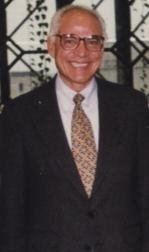Farouk El-Baz | |
|---|---|
| فاروق الباز | |
 | |
| Born | January 2, 1938 |
| Citizenship | Egypt United States |
| Alma mater | Ain Shams University Missouri University of Science and Technology |
| Known for | Project Apollo |
| Awards | NASA's Apollo Achievement Award Exceptional Scientific Achievement Medal Certificate of Merit of the World Aerospace Education Organization Republic of Egypt Order of Merit - First Class 1989 Outstanding Achievement Award of the Egyptian American Organization 1991 Golden Door Award of the International Institute of Boston |
| Scientific career | |
| Fields | Geology |
| Institutions | NASA Boston University |
Farouk El-Baz (Arabic: فاروق الباز, Pronunciation: [fɑˈruːʔ elˈbæːz, fæˈruːʔ]) (born January 2, 1938) is an Egyptian American space scientist and geologist, who worked with NASA in the scientific exploration of the Moon and the planning of the Apollo program. He was a leading geologist on the program, responsible for studying the geology of the Moon, the selection of landing sites for the Apollo missions, and the training of astronauts in lunar observations and photography. He played a key role in the Apollo 11 Moon landing mission, and later Apollo missions. He also came up with the idea of touchable Moon rocks at a museum, inspired by his childhood pilgrimage to Mecca where he touched the Black Stone (which in Islam is believed to be sent down from the heavens).[1]
He is married, has four daughters, and has seven grandchildren. He was a Senior Advisor to Egypt's former president Hosni Mubarak.
El-Baz was a Research Professor and Director of the Center for Remote Sensing at Boston University in Boston, Massachusetts. He was an adjunct professor of Geology at the Faculty of Science, Ain Shams University, Cairo, Egypt. He has since now retired but his work remains timeless and well regarded at the university
He is also a member of the Board of Trustees of the Geological Society of America Foundation, Boulder, Colorado, and a member of the Board of Directors of CRDF Global. He was also elected a member of the U.S. National Academy of Engineering in Washington, DC (2002) for selecting the landing sites for the Apollo missions, and for pioneering methods of discovering subsurface freshwater from space observations.
- ^ Reichhardt, Tony (June 7, 2019). "Twenty People Who Made Apollo Happen". Air & Space/Smithsonian. Smithsonian Institution. Retrieved September 7, 2019.